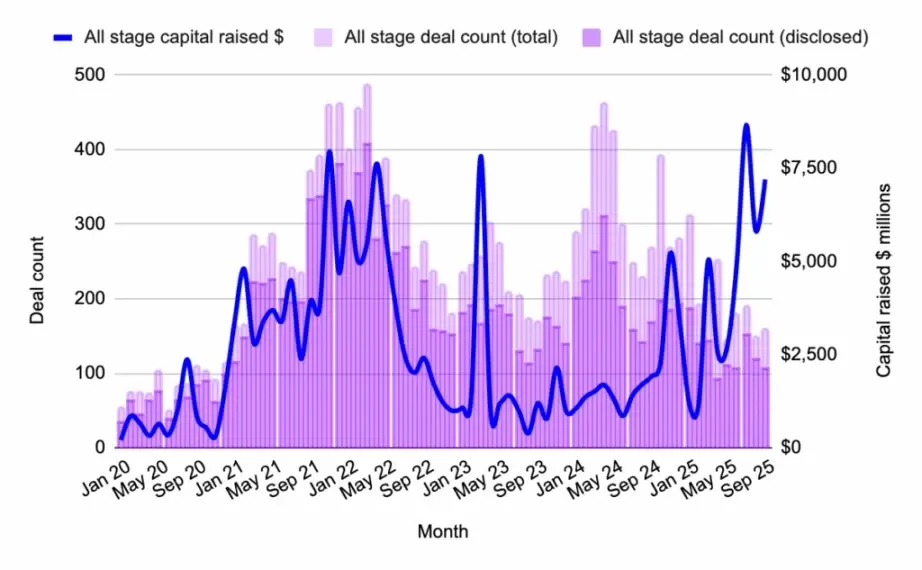On the morning of October 30 in the East Eight Zone, President Xi Jinping of China met with President Donald Trump of the United States in Busan, South Korea. This was the first face-to-face communication between the two leaders since the Osaka G20 Summit in 2019, and the meeting lasted approximately 100 minutes.
During the meeting, both sides engaged in in-depth discussions on various topics, including economic and trade cooperation and global governance, reaching several preliminary consensus points. President Trump stated after the meeting: “This meeting was outstanding, and we reached important agreements.” President Xi emphasized that China-U.S. relations should be guided by partnership and friendship, jointly navigating the overall situation.
The meeting was held under the framework of the Asia-Pacific Economic Cooperation (APEC) summit, against the backdrop of ongoing China-U.S. trade frictions that continue to impact global supply chains. The latest report from the International Monetary Fund (IMF) indicates that trade tensions have led to a downward revision of the global economic growth forecast for 2025 to 3.2%.
Main Content of the Meeting: Economic and Trade Consensus and Cooperation Framework
The meeting focused on stabilizing economic and trade relations and global cooperation. The economic and trade teams from both sides had previously conducted preliminary consultations in Malaysia, forming a framework of opinions. This summit further confirmed the consensus and emphasized the constructive role of dialogue mechanisms.
● President Xi pointed out: “China-U.S. economic and trade relations should serve as a ballast and a propeller, rather than a stumbling block.”
● President Trump responded: “As the largest trading partners, China and the U.S. can jointly promote global economic growth.”
● Core of the economic and trade consensus: Both sides agreed to implement a “one-year trade truce” framework aimed at alleviating tariff barriers and stabilizing supply chains.
This framework does not involve geopolitically sensitive issues and focuses on cooperation in specific areas. Follow-up mechanisms:
● The economic and trade teams will quickly refine the details of the agreement, adhering to the principles of equality, respect, and reciprocity, compressing the list of issues and expanding areas of cooperation. A preliminary implementation report is expected to be submitted by the end of November.
● In terms of global governance: The two heads of state agreed to deepen cooperation in areas such as combating fentanyl, governance of artificial intelligence, and infectious disease prevention and control. President Xi stated: “China and the U.S. can work together to accomplish significant matters beneficial to the world.” President Trump added: “Next year, China and the U.S. will each host the APEC and G20 summits, supporting each other to achieve positive outcomes.”
Analysis of Agreements Reached: Practical Results in Multiple Areas
After the meeting, both sides announced a preliminary agreement framework covering areas such as tariff adjustments, agricultural trade, rare earth supply, and drug control. These measures aim to address domestic concerns and provide certainty for the global market. The following table summarizes the main agreement contents, background, and expected impacts:
Agreement Area
Specific Content
Background and Expected Impact
Tariff Adjustments
The U.S. will reduce the average tariff on Chinese imports from 57% to 47%; tariffs on fentanyl-related products will decrease from 20% to 10%.
During the peak of the trade war, U.S. tariffs on China reached 25%, which has raised U.S. inflation by 1.2 percentage points (Federal Reserve Q3 report, October 2025). This move is expected to save U.S. consumers about $50 billion in spending.
Agricultural Trade
China will resume large-scale purchases of U.S. soybeans and other agricultural products, with purchases in the first half of the year down more than 50% from peak levels.
In 2024, U.S. soybean exports to China are expected to be only $12 billion. The agreement may restore 30% of market share, stabilizing the agricultural economy in the U.S. Midwest.
Rare Earth Exports
China agrees to postpone or lift restrictions on rare earth mineral exports, ensuring stable supply to the U.S. with a one-year commitment.
China accounts for over 80% of global rare earth production. President Trump called this a “significant progress,” which will help alleviate pressure on electric vehicle and chip supply chains (Politico, October 30, 2025).
Fentanyl Cooperation
China will strengthen efforts to combat the illegal export and trafficking of fentanyl precursor chemicals, with the U.S. providing technical support.
The U.S. sees over 100,000 fentanyl-related deaths annually. The cooperation is expected to halve the illegal inflow.
Source: Compiled by AiCoin
Market Reactions and Macroeconomic Impact: Recovery Potential Amid Short-term Volatility
● Commodity Market Dynamics: Gold prices fell due to a decrease in geopolitical risk premium, currently at $3,965 per ounce. Brent crude oil futures declined by 1.1% to $82 per barrel, reflecting improved energy supply expectations.
● Cryptocurrency Volatility: Bitcoin's price dropped from $113,000 to $108,000 an hour before the meeting. After the details of the agreement were disclosed, Bitcoin experienced a V-shaped rebound, recovering to the $111,000 mark, with Ethereum rising by 1%.

● Macroeconomic Data Support: China's GDP growth rate for the first three quarters reached 5.2%, and the agreement may further drive global goods trade growth by 4%. The yield on U.S. ten-year Treasury bonds stabilized at 4.0%, and positive signals also emerged from the European economy. The Bank of Japan maintained its policy but hinted at a possible rate hike in December.
Summary of Perspectives: Consensus Dominates, Cautious Optimism Coexists
The meeting sparked widespread discussion in the international community, with both the White House and Chinese officials expressing positive evaluations.
● President Trump's team stated: “The results are significant and beneficial to the U.S. economy and national security.”
● A spokesperson for the Chinese Ministry of Foreign Affairs stated: “The dialogue mechanism will open up broad space for cooperation.”
● Diverging Views from Wall Street and Think Tanks. Goldman Sachs analyst Hao Zhou pointed out: “The meeting was overall positive, but technological competition needs continued attention.” Zaye Capital Chief Investment Officer Naeem Aslam added: “The market is skeptical about substantial terms, and short-term volatility can be expected.”
KOL/Source
Macroeconomic Views
Cryptocurrency Market Views
@SelfSuccessSaga
Trade easing releases liquidity tide, driving global growth by 0.5-1%; China-U.S. complementarity strengthens, sensitive to dollar exchange rates.
The meeting flips risk sentiment, Bitcoin target at $115,000+; altseason revival, DeFi liquidity injection.
@earnwithrk
Risks at the tail end of the trade war decrease, increasing the probability of Fed rate cuts; emerging markets benefit, with Chinese beta stocks leading.
Flash crash cleanses leverage, followed by a V-shaped reversal, initiating a super bull market; BTC/ETH broadly rise, with opportunities greater than risks post-liquidation.
@cryptoradar92
Tactical trading provides breathing space, global GDP expectations raised; however, structural issues remain unresolved, inflation pressure eases.
One-year agreement unlocks super bull market, rebound after whale manipulation; BTC target at $125,000, bullish on risk assets.
@EyeOnChain
Diplomatic signals downgrade geopolitical risks, energy/oil premiums decline; defensive assets strengthen slightly.
Unannounced statements trigger uncertain pricing, volatility remains high; ETH/SOL under pressure, but rebound expected after agreement details are refined.
Binance Square
The summit reshapes China-U.S. relations, liquidity release boosts risk assets; 70% probability of rate cuts in December.
Trade hopes lift Bitcoin, sustaining between $116,000-$125,000; cryptocurrency stocks rise in tandem.
Source: Compiled by AiCoin
Steady Progress Requires Caution Against Hidden Reefs
● Economic Uncertainty: Insufficient global demand hampers recovery, with the IMF maintaining a 3.2% growth forecast for 2025. The trend of de-dollarization in the cryptocurrency market may exacerbate volatility.
● Looking ahead to 2026: China will host the APEC summit, and the U.S. will host the G20, with both sides committing to mutual support. Deloitte predicts that there is ample room for China-U.S. cooperation, but challenges of weak demand must be addressed.
Join our community to discuss and grow stronger together!
Official Telegram community: https://t.me/aicoincn
AiCoin Chinese Twitter: https://x.com/AiCoinzh
OKX benefits group: https://aicoin.com/link/chat?cid=l61eM4owQ
Binance benefits group: https://aicoin.com/link/chat?cid=ynr7d1P6Z
免责声明:本文章仅代表作者个人观点,不代表本平台的立场和观点。本文章仅供信息分享,不构成对任何人的任何投资建议。用户与作者之间的任何争议,与本平台无关。如网页中刊载的文章或图片涉及侵权,请提供相关的权利证明和身份证明发送邮件到support@aicoin.com,本平台相关工作人员将会进行核查。




